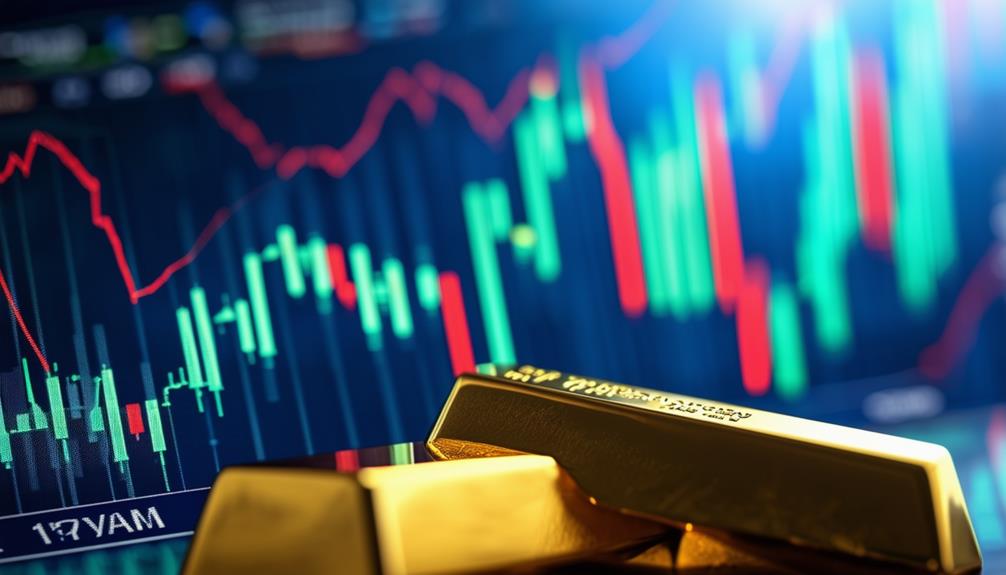Gold, a precious metal coveted for its unparalleled combination of rarity, beauty, and versatility, has been a symbol of wealth, power, and status for thousands of years. Its unique chemical properties, including high ductility, malleability, and resistance to corrosion, make it an ideal material for various applications. Throughout history, gold has been used in ancient civilizations for ornate jewelry, currency, and symbols of wealth, and its uses extend beyond aesthetics due to its unique properties. From medical applications to modern technology, gold’s value endures, and its rare forms, such as 24-karat alloys and gold nuggets, command high prices, making it the most desired metal in human history, with its story still unfolding.
Ancient Civilizations and Gold

Throughout the annals of human history, gold has played a pivotal role in the development and grandeur of ancient civilizations. The allure of gold’s radiant hue and durability captivated the imagination of early cultures, who prized it as a symbol of wealth, power, and divinity.
In ancient Egypt, gold was used to adorn pharaohs and their tombs, while in Greece, it was employed to craft ornate jewelry and decorative objects. The Romans, in turn, utilized gold to mint coins, solidifying its status as a medium of exchange.
Gold’s value extended beyond aesthetics, as it facilitated trade and commerce across the ancient world. The Lydians, for instance, introduced the first gold coins in the 7th century BCE, revolutionizing economic transactions. Similarly, the Aztecs and Incas revered gold as a sacred metal, using it to create intricate ornaments and ceremonial objects.
As civilizations rose and fell, gold remained a constant, coveted treasure, its allure transcending time and geography. Its enduring appeal continues to captivate modern societies, solidifying its position as a treasured and timeless metal.
Gold’s Unique Chemical Properties

As the allure of gold’s aesthetic appeal has captivated civilizations for millennia, its unique chemical properties have also contributed greatly to its value and versatility.
One of gold’s most notable properties is its high ductility, allowing it to be drawn into thin wires or molded into intricate shapes without breaking. Its high malleability also enables gold to be beaten into thin sheets, known as gold leaf, which is often used for gilding and ornamental purposes.
Gold is also highly resistant to corrosion and reacts very slowly with other elements, making it an ideal material for applications where durability is essential. Additionally, gold has a high melting point, which allows it to be alloyed with other metals to create stronger and more durable materials.
Its unique combination of chemical properties has made gold a highly sought-after metal for a wide range of applications, from jewelry and coins to electronics and medicine.
Uses of Gold Throughout History

The versatility of gold’s chemical properties has been leveraged across various industries and cultures throughout history, with its value extending far beyond mere aesthetics. Gold’s durability, corrosion resistance, and malleability made it an ideal material for crafting jewelry, ornaments, and decorative items.
In ancient civilizations, gold was used to create religious artifacts, ceremonial objects, and symbols of wealth and power.
Gold’s unique properties also made it a valuable material in medicine, where it was used to create surgical instruments, dental fillings, and other medical devices. In addition, gold’s antibacterial properties made it useful for treating certain medical conditions.
In the culinary world, gold was used to create decorative food items, such as gold-leafed pastries and candies, as well as edible gold dust for garnishing desserts.
Throughout history, gold has also played a significant role in currency and trade, serving as a medium of exchange, a store of value, and a symbol of wealth. Its value and versatility have made gold a highly sought-after metal, with its uses extending far beyond its aesthetic appeal.
Gold in Modern Technology
Innovation’s unyielding pursuit of efficiency and precision has led to the integration of gold into modern technology, where its unique properties have proven invaluable in various applications. Gold’s exceptional conductivity, corrosion resistance, and biocompatibility make it an ideal material for advanced electronics, medical devices, and aerospace engineering.
In the electronics industry, gold is used to create reliable connectors, switches, and contacts, ensuring seamless data transmission and minimizing signal loss. Its high melting point and resistance to oxidation also make gold an essential component in satellite components and spacecraft systems.
Additionally, gold’s antimicrobial properties have led to its incorporation into medical implants, wound dressings, and surgical instruments, reducing the risk of infection and promoting faster healing. As technology continues to evolve, the demand for gold’s unique properties is likely to increase, solidifying its position as a crucial component in modern innovation.
The Rarest and Most Valuable

Gold’s allure expands beyond its practical uses, captivating collectors and connoisseurs with its scarcity and worth. Among the various types of gold, some stand out for their exceptional scarcity and worth.
Rhodium, a rare and silvery-white metal, is often used to plate white gold, enhancing its worth and durability. Iridium, another rare platinum group metal, is highly resistant to corrosion and has a melting point of over 4,500°F, making it highly sought after.
The most valuable gold alloys are often 22-karat or 24-karat, with a higher gold content boosting their worth. Some gold coins, like the South African Krugerrand and the Canadian Gold Maple Leaf, are highly esteemed for their gold content and scarcity. Gold nuggets, especially those with unique shapes or characteristics, can also command high prices at auction.
The scarcity and worth of gold are also influenced by its origin, with gold from historic or ancient sources demanding high prices. The discovery of gold in ancient artifacts or treasure troves can greatly enhance its worth, making it a cherished possession for collectors and connoisseurs.
Frequently Asked Questions
Can You Make Gold at Home Through Alchemy or Other Means?
Creating gold at home through alchemy or other means is a myth with no scientific basis. Alchemy, a medieval pseudoscience, has been discredited, and modern chemistry cannot manipulate atomic structures to transform base metals into gold.
Is Gold Magnetic, and if Not, Why Not?
Gold is not magnetically responsive due to its chemical structure, as it has a full outer electron shell, rendering it diamagnetic, meaning it weakly repels magnetic fields, unlike ferromagnetic materials that strongly attract them.
How Do Gold Prices Fluctuate and What Affects Them?
Gold prices fluctuate in response to supply and demand imbalances, influenced by factors such as central bank reserves, inflation rates, currency exchange rates, geopolitical tensions, and investor sentiment, leading to dynamic price adjustments in the global gold market.
Can You Plate or Coat Other Metals With Gold?
Yes, gold plating or coating, also known as gilding, is a common practice where a thin layer of gold is deposited onto the surface of a base metal, such as copper, silver, or zinc, through electroplating or chemical deposition.
Is Gold Edible, and Are Gold Leaf and Gold Dust Safe to Consume?
Gold is generally considered non-toxic and non-reactive, making it edible in small quantities; however, gold leaf and gold dust should be consumed in moderation, as excessive intake may cause gastrointestinal issues due to their inert properties.
Conclusion
To sum up, gold’s allure spans millennia, driven by its unique chemical properties, versatility, and aesthetic appeal. From ancient civilizations to modern technology, gold has played a significant role in human history. Its rarity and value have been consistently demonstrated, from ornamental uses to cutting-edge applications. As a highly sought-after metal, gold continues to fascinate and inspire, solidifying its position as a prized commodity.










